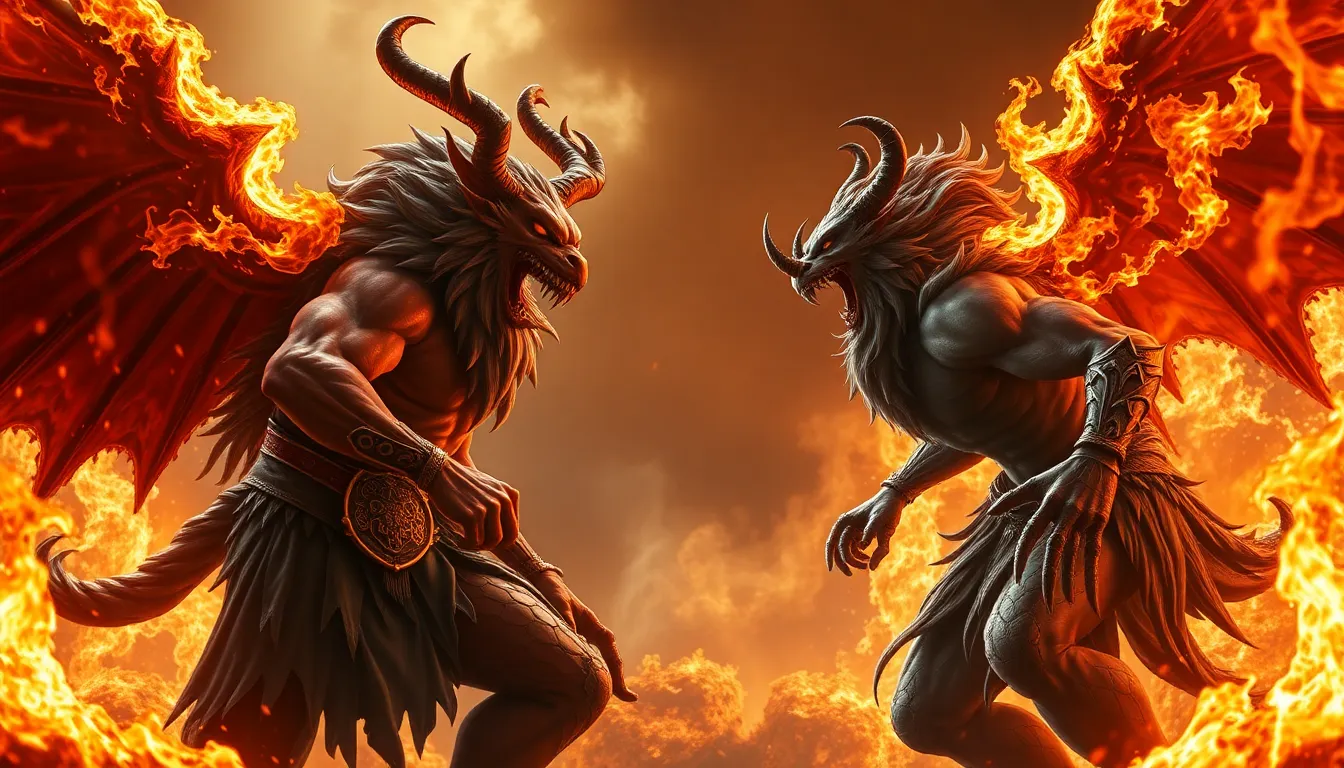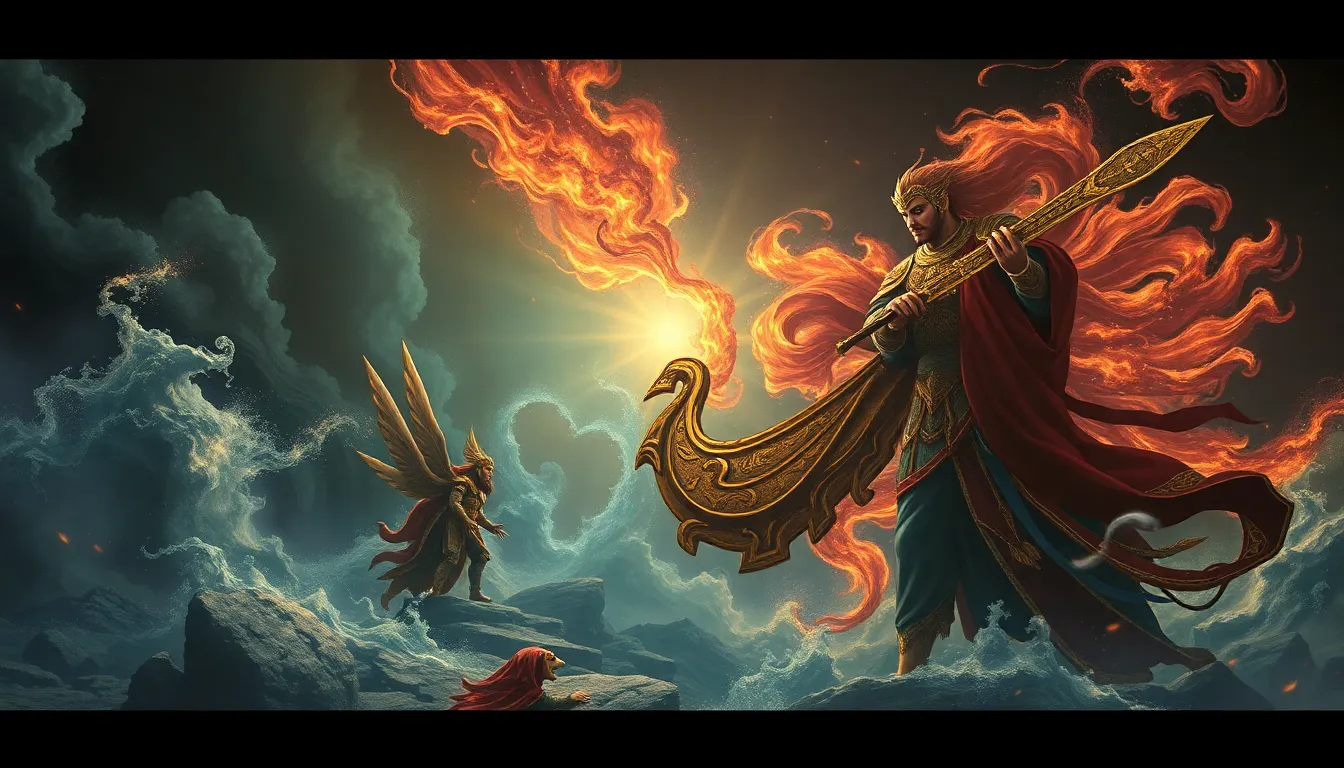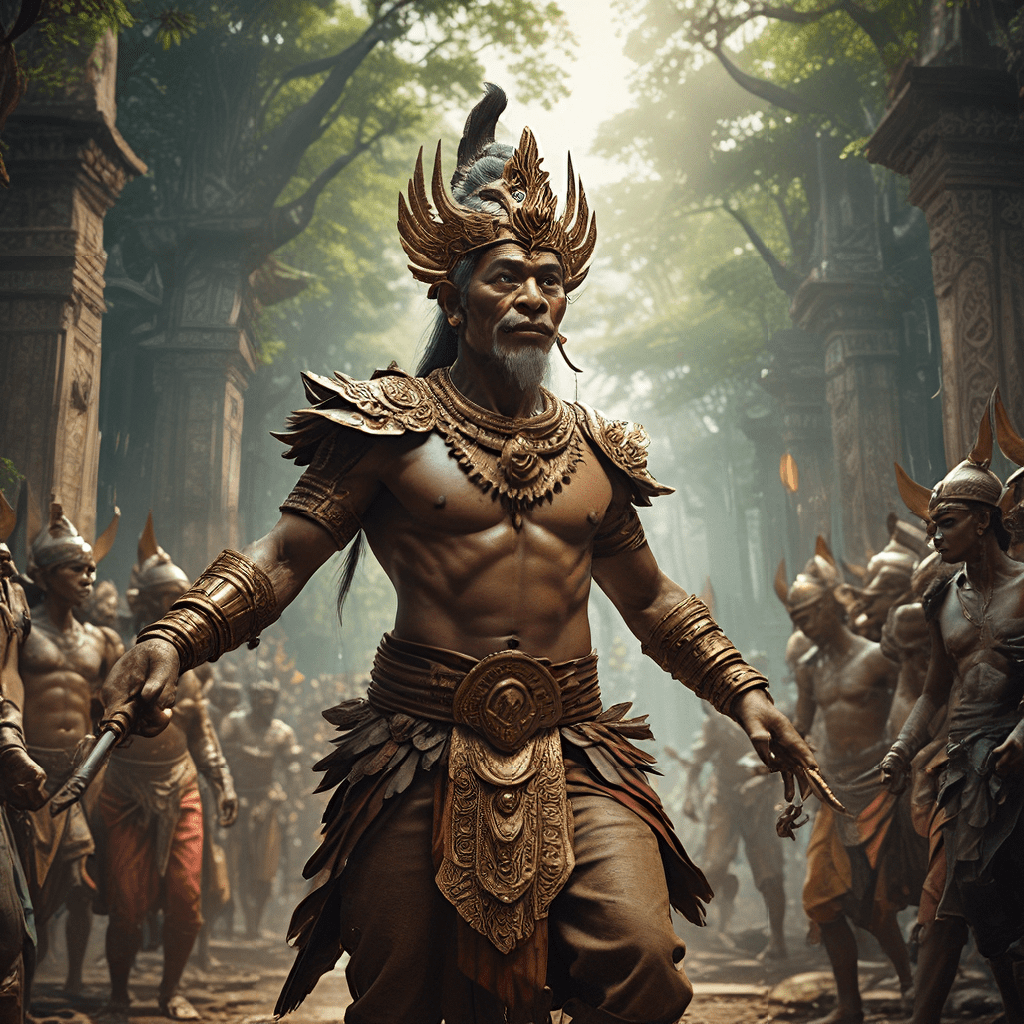Fierce Legends: The Most Intense Mythological Showdowns!
Introduction: The Allure of Mythological Showdowns
Throughout history, mythological battles have captivated the human imagination, offering thrilling narratives that explore the depths of power, morality, and the human condition. These confrontations are not merely tales of conflict; they embody the struggles of gods, heroes, and creatures, reflecting cultural values and existential questions. From the thunderous clashes of Greek titans to the apocalyptic events of Norse legends, mythological showdowns serve as allegories for the trials of life and the eternal struggle between good and evil.
This article will delve into some of the most intense and significant mythological confrontations across various cultures, highlighting the heroes, deities, and themes that define these legendary battles.
The Titans vs. The Olympians: The Birth of Greek Gods
The Titanomachy, the epic battle between the Titans and the Olympians, marks a pivotal moment in Greek mythology. After the Titans, led by Cronus, overthrew their father Uranus, they ruled the cosmos until Zeus and his siblings rebelled. This conflict was not merely a struggle for power but a transformation of the divine order.
Key players in this epic saga include:
- Cronus: The Titan king who feared being overthrown by his children.
- Zeus: The youngest son of Cronus, who ultimately led the rebellion against the Titans.
- Hades and Poseidon: Zeus’ brothers who played crucial roles in the battle.
The Titanomachy resulted in the defeat of the Titans and the establishment of the Olympian gods on Mount Olympus, profoundly influencing Greek mythology and shaping the narratives and character arcs of countless myths that followed.
Ragnarök: The Norse End Times Battle
Ragnarök, often referred to as the “Twilight of the Gods,” is a series of events foretold to lead to the death of numerous gods, including Odin, Thor, and Loki. This cataclysmic battle signifies the ultimate confrontation between the forces of order and chaos, fate and free will.
Major figures involved in this epic showdown include:
- Odin: The Allfather who seeks knowledge to prepare for the end.
- Thor: The thunder god, destined to face the monstrous serpent Jörmungandr.
- Loki: The trickster god whose betrayal leads to the final battle.
- Fenrir: The giant wolf destined to slay Odin.
The significance of Ragnarök in Norse culture extends beyond mere destruction; it represents the cyclical nature of life, death, and rebirth, echoing the themes of fate and destiny that permeate Norse mythology.
The Epic Duel of Gilgamesh and Enkidu
The Epic of Gilgamesh, one of the oldest known literary works, chronicles the adventures of Gilgamesh, a powerful king, and his friend Enkidu. Their journey takes them to confront Humbaba, the guardian of the Cedar Forest. This showdown is not just a test of strength but a profound exploration of friendship and humanity’s quest for immortality.
The implications of this battle include:
- Friendship: The bond between Gilgamesh and Enkidu illustrates the importance of companionship.
- Mortality: Their quest against Humbaba raises questions about life, death, and legacy.
- Fame: The desire for eternal glory drives their actions and decisions.
This epic duel is emblematic of the human experience, reflecting the struggle for meaning in a fleeting existence.
The Battle of the Gods: Shiva vs. Vishnu in Hindu Mythology
In Hindu mythology, the cosmic dance of creation and destruction is personified in the figures of Shiva and Vishnu. While often seen as opposing forces, their confrontations represent the balance of the universe and the duality of existence.
The allegorical meaning behind their battles includes:
- Dharma: The concept of duty and righteousness plays a crucial role in their encounters.
- Chaos: Shiva embodies destruction, making way for renewal, while Vishnu represents preservation.
These battles are not just physical confrontations; they symbolize the eternal struggle between chaos and order, life and death, reflecting the intricate tapestry of Hindu philosophy.
The Clash of Titans: The Battle of Tezcatlipoca and Quetzalcoatl
In Aztec mythology, Tezcatlipoca and Quetzalcoatl represent two contrasting philosophies: one of conflict and one of cooperation. Their rivalry shaped the world and influenced the cultural practices of the Aztec civilization.
The significance of their struggles can be understood through:
- Philosophical Conflict: Tezcatlipoca, the god of the night sky, often represented chaos and strife, while Quetzalcoatl, the feathered serpent, symbolized life and knowledge.
- Cultural Reflection: Their battles reflect the societal values of the Aztecs, emphasizing the duality of human nature.
This mythological clash illustrates the complexities of existence and highlights the need for balance in society.
The Duel of the Dragons: Fafnir vs. Sigurd in Norse Lore
The tale of Fafnir, the dragon, and Sigurd, the hero, is a classic Norse legend that explores themes of greed, heroism, and the consequences of ambition. Fafnir, transformed into a dragon by his insatiable greed, hoards a vast treasure, leading to his inevitable confrontation with Sigurd.
The analysis of their battle reveals:
- Greed: Fafnir’s transformation serves as a cautionary tale about the corrupting power of wealth.
- Heroism: Sigurd’s victory symbolizes the triumph of bravery and righteousness over malevolence.
This legend has influenced later literature and folklore, cementing its place in the canon of heroic tales.
The Celestial Showdown: The Battle of the Sun and the Moon in Various Cultures
Across different mythologies, the celestial bodies of the sun and moon often engage in symbolic battles, representing the cyclical nature of day and night. These confrontations illustrate the duality of existence and the interplay of light and darkness.
Examples of these celestial showdowns include:
- Egyptian Mythology: Ra, the sun god, battles the serpent Apep, representing chaos.
- Chinese Mythology: The sun and moon deities are often depicted in conflict, reflecting the balance of yin and yang.
- Native American Myths: Various tribes tell stories of the sun and moon engaging in contests that shape the seasons.
The symbolic meaning behind these confrontations emphasizes the importance of balance in the universe and the eternal cycle of life.
Modern Interpretations of Mythological Battles in Media
In contemporary culture, mythological battles continue to inspire literature, film, and art. These modern adaptations often reinterpret ancient conflicts, infusing them with contemporary themes and moral dilemmas.
Examples include:
- Films: Movies like “Clash of the Titans” and “Thor” bring ancient stories to life, showcasing the epic nature of these mythological confrontations.
- Literature: Novels like Neil Gaiman’s “American Gods” explore the relevance of mythological figures in modern society.
- Video Games: Games like “God of War” and “Hades” allow players to engage with these legendary battles, offering interactive experiences that delve into mythological themes.</



